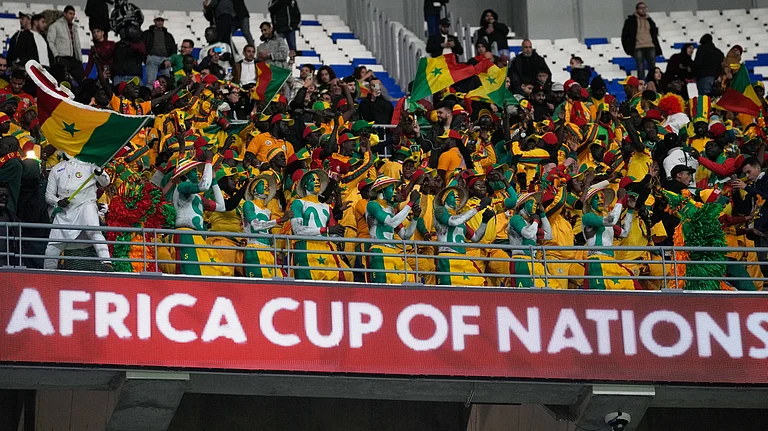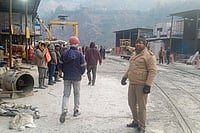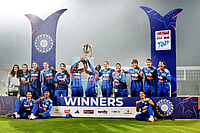Enter The No-Fly Zone
- Banks will insist on strict conditions before promising any more funds. Some may even go so far as calling in their debt.
- The airline will have to tap promoter funds, which could put pressure on UB group finances.
- Kingfisher will have to bring in professional management and change strategies
- It remains to be seen how the airline reduces costs as a full service carrier
- FDI in airlines might happen soon, but will the current regulatory environment attract major investors?
***
In aviation parlance, there are three stages in aircraft flight: ascent, cruise and descent. The high-profile Vijay Mallya’s Kingfisher Airlines—India’s second largest by market share—has followed the same course since the start of operations in 2005. And now, at this crucial stage, questionable management practices, lack of finance and flawed strategies are threatening the airline’s smooth landing. And a relentless public focus on the airline’s travails has ensured that the touchdown on tarmac will be watched every inch of the way. Make no mistake, the landing will happen. But many things will change forever for this airline and its flamboyant owner. And that isn’t a bad thing for an airline that once sought to redefine flying in India.
With an accumulated debt of over Rs 7,700 crore and many straight quarters of loss on the trot, things don’t look good. In the last quarter, Kingfisher registered losses of Rs 469 crore as against `231 crore in the corresponding period in the previous year. The airline has been cancelling flights and grounding aircraft; the effects of these actions on consumer confidence will play out, negatively for sure. Whatever the explanation (“reconfiguration exercise”), it’s now common knowledge that the airline is desperately short of working capital and is at the banks’ door for a bailout.
Although the banks seem to be willing to bring in more working capital, they will surely extract their pound of flesh by imposing stricter terms on the airline’s functioning. The 13-bank consortium is meeting soon to take a call. But already there is lack of agreement among them on the way forward. While SBI, the biggest lender, is keen on infusion of Rs 800 crore from the promoters before further capital is brought in, other banks reportedly feel the current loans should be squared off first.
The airline itself has been looking for a strategic investor and its promoter Vijay Mallya made a strong pitch for allowing FDI into the sector, something, it is learnt, the government is considering seriously and might happen soon. Mallya also informed the media that an Indian investor has approached him (the promoters have a stake of 58.61 per cent). Rumours abound but all the noise generated takes away from the real problems facing Kingfisher.
“The situation for the airline is fairly precarious and we are quite conscious of that. In the past, we’ve tried to help the airline with a restructuring plan but this time it seems tougher,” says a senior official of a public sector bank, a key lender. While the banks acknowledge that the airline needs loans to cover its short-term working capital needs, they say there is no clarity on how the current debt will be taken care of. “The promoters have to take some responsibility that gives an indication that they are serious about running the airline and squaring off their current commitments,” adds a private sector banker.
Currently, the bulk of the debt is in long-term loans. Bankers say they are reluctant to consider short-term loans without some guarantee. Some of the lenders are even considering calling in their debt. A financial industry expert says that this is not surprising considering the state the banks themselves are in. “They need capital infusion themselves, npas are rising and credit/industrial growth are nothing to write home about.”
Apart from inflated costs and unviable routes, lenders are asking tough questions (and about time too) on questionable management practices. “The airline’s strategy seems to have wavered and there’s very little clarity on how it plans to get out of this mess except by depending on the possibility that another partner will be brought in. That may be a quickfix. It may not work in fixing the operational issues with the airline,” says a top banker.

No seatbelts Irate passengers at a closed Kingfisher Airlines counter, Mumbai airport
Bankers are looking for a definite plan for revival. “Businesses cannot be run on the basis of just capital or credit infusion. Kingfisher’s management needs to rethink its business model, cut costs, rationalise and perhaps restart with a new approach,” says an aviation analyst.
Unfortunately for Kingfisher, many of its new strategies have bombed. First, its takeover of India’s first low-cost carrier Air Deccan in 2007 at a high cost never bore fruit. Its entry into the international sector was at a time when the global economy was stretched and signs of recession were writ large over many economies. Oil prices have also been rising. Says Kapil Kaul, CEO, South Asia, Centre for Aviation, an aviation consultancy: “Kingfisher has been unfortunate as whenever they made a strategic move, the market structure changed.” That said, other airlines like Indigo and, to a lesser extent, Spicejet, have managed to perform better.
In December 2010, Kingfisher had successfully completed a controversial master debt recast with the consortium of banks. This included interest rate reduction, converting debt into equity—at a significant premium to the current market price of the Kingfisher stock—and enhancement of working capital. However, again the global oil prices spiralled to reach over $120 a barrel and the rupee depreciated by about 10 per cent. Result: increased costs and more losses.
In the coming months, Kingfisher will need to reorganise and ruthlessly rationalise its routes to match demand and exit loss-making routes, an exercise it has already begun by cancelling several flights and going in for a reconfiguration of its planes to morph back into a full-service carrier. Above all, with banks agreeing to a small blood infusion into the airline, Kingfisher needs to reduce non-bank debt to manageable levels.. It will also have to bring in serious management expertise to initiate a genuine recovery plan, something the banks will insist on before any further exposure.
There are many who disagree with this full service carrier tack (see interview with G.R. Gopinath). But other experts are more sanguine. “Exiting the low-cost business was a right decision as he (Vijay Mallya) knows the full service carrier business well. There are too many low-cost carriers in India but there is space and less competition in the full-service business where he can pass on the high cost of ATF to the passengers,” says Sonam Udasi, head of research, idbi Capital. Given the poor fortunes of full carrier Jet Airways, it remains to be seen if this tack pays off.
Mallya, as is his wont, has laid out a lot of ideas—like direct import of aviation turbine fuel to save on taxes, something that would require a policy change, infrastructure at airports and conversion of rupee debt to lower cost foreign currency loans. Then he’s pushing back delivery of newly ordered aircraft to reduce debt and force a recovery. There is also a rights issue worth Rs 2,000 crore soon. Already, the parent UB group (whose finances appear to be healthy) has raised over Rs 760-crore for the airline. If more help is to be obtained from banks, that figure may have to go up further.
Kingfisher’s story is one of frequent strategy changes that affected its financials. The airline lost out in the volumes game in the low-cost business, and now it seeks to return to its roots. In the crucial months to come, Vijay Mallya will have to procure the best professional talent to pull his once brilliant airline out of this crisis. For once, the king of good times may have to take the backseat to ensure a smooth landing.
By Arindam Mukherjee with Arti Sharma in Mumbai


























